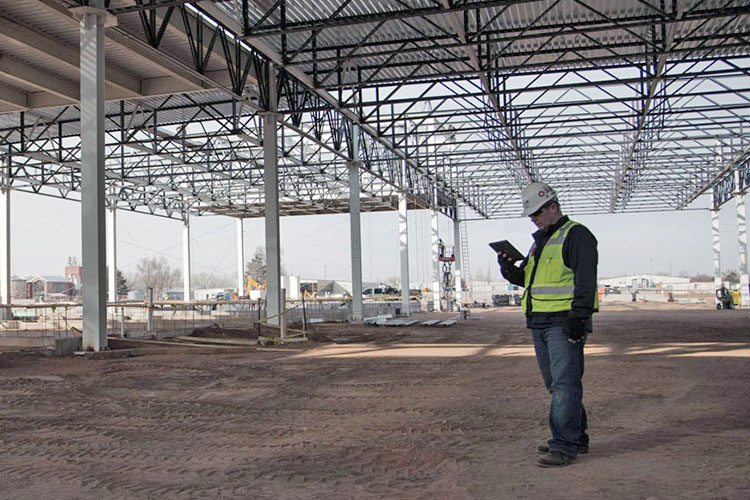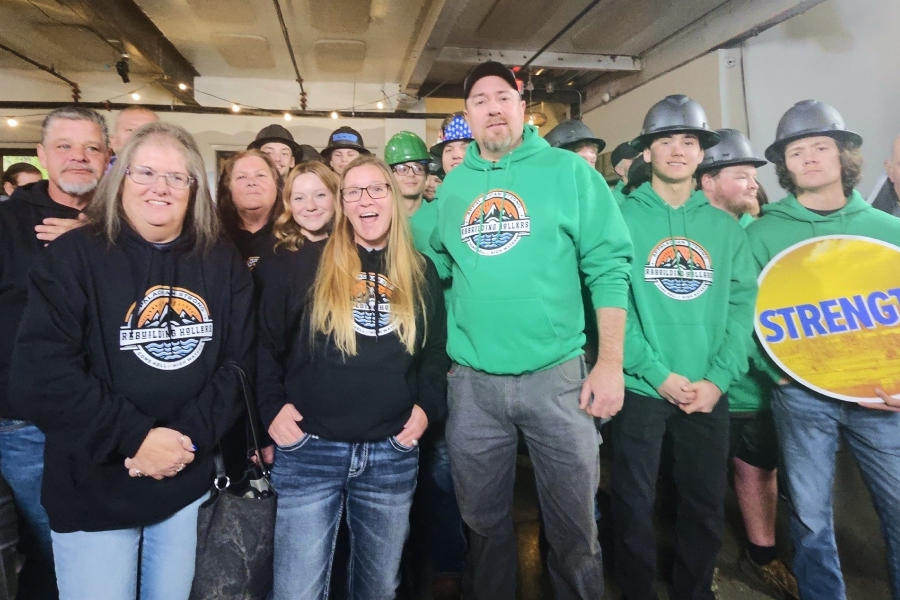As a global manufacturing company, Woodward, Inc. is known for developing cutting-edge control systems for the aerospace and industrial markets. Currently, they are partnering with Mortenson Construction to build Woodward’s advanced mixed-use global headquarters and Industrial Turbomachinery Systems (ITS) manufacturing facility in Fort Collins, CO. The project, which will be the only ITS campus of its kind worldwide, presents unique challenges for project teams.
Project partners are tasked with implementing lean processes to develop land with no existing infrastructure, create sightlines between workable office and manufacturing spaces, and devise a space flexible enough for several pieces of two-ton turbomachinery manufacturing equipment to live. Stakeholders had to establish standards for processes and communication early on to ensure a successful build.
Here are five key upfront considerations the teams deem critical to their continued success:
1. Devise a BIM Execution Plan Pre-Construction
The teams identified a need to carefully consider and create a BIM execution plan early on, which they developed with all stakeholders involved before the official project onset.
Team discussions outlined who would have access to the model, and who would need training to view it. They also determined which standards, such as file naming conventions, would be invaluable to the project’s efficiency. And finally, the teams specified how information not housed within the model, like permitting documents, would be shared in the cloud.
“It takes a lot of behind-the-scenes effort to work out those workflows. Mortenson and the owner are viewing our model and files literally as we’re designing them. It’s critical for the overall process.” – Matt Kraft, Senior Project Manager, Ghafari Associates
Team members credit the approach for introducing more order into the process, and the plan serves as a foundation for the culture of trust that now empowers an effective active-model-sharing project environment.
2. Quantify the Value of Process Optimization
Time spent on repetitive tasks quickly adds up, so Mortenson and company identified such tasks and the time devoted to them well in advance to explore which technology tool choices would enable automation. The Woodward team’s accelerated schedule means teams are often generating new document sets weekly. Tasks like hyperlinking and slip-sheeting have typically been a full-time job, given the volume of the new sets, but with the ability to automate batch processing, such as hyperlinking in Bluebeam Revu, the time dedicated to setting up drawing sets has been dramatically reduced.
“These processes that typically take eight to sixteen hours—we’re able to do it in three.” – Hunter Nelson, Integrated Construction Coordinator, Mortenson Construction
The team stays on track working from the most up-to-date information and can focus their efforts directly on value-adding activities. Mortenson Integrated Construction Coordinator Hunter Nelson adds, “We’re able to take document control to the next level.”
3. Identify Standard Communication Tools
The complex project teams of today are rarely within one locale. In fact, for many Woodward projects, team members are global. For the Woodward Lincoln Campus project, Mortenson is working out of Denver-based offices with Ghafari Associates, which is headquartered in Dearborn, MI and maintains contact with its own critical production office in Baroda, India.
At project onset, the team sought ways to circumvent any potential delays caused by geographic distance and began leveraging Bluebeam Studio to enable efficient and accurate communication across time zones and international borders. Studio allows project partners to collaborate on and manage the same PDFs in real time, eliminating the need for version control monitoring and physical shipments.
4. Establish Standard File Formats
Teams on the campus project need to easily share files up- and downstream. They decided early on to use commonly used file formats like PDF and Excel/CSV to manage risk, ensure global access, and build flexibility into communications. They use the Excel/CSV export function in Bluebeam Revu to export all tracked document activity, create item lists from the data, and verify posted activity in a universal way that is easily digestible by all stakeholders.
5. Develop Solid Foundational Processes
Mortenson, Ghafari and Woodward all strongly agree that cohesive implementation is the tipping point of success. The team made early, deliberate efforts to provide cross-company training on the VDC and collaboration software tools they opted to implement for the project. Choosing intuitive technology solutions and arming all project partners with a common level of technology savviness allows the team to efficiently streamline processes rather than face an intimidating technology learning curve.
“You can talk about lean processes and lean delivery methods, but implementing that and using the tools and software is really what makes the difference between a positive and successful program and a not-so-successful program.” – Matt Kraft, Ghafari Senior Project Manager











